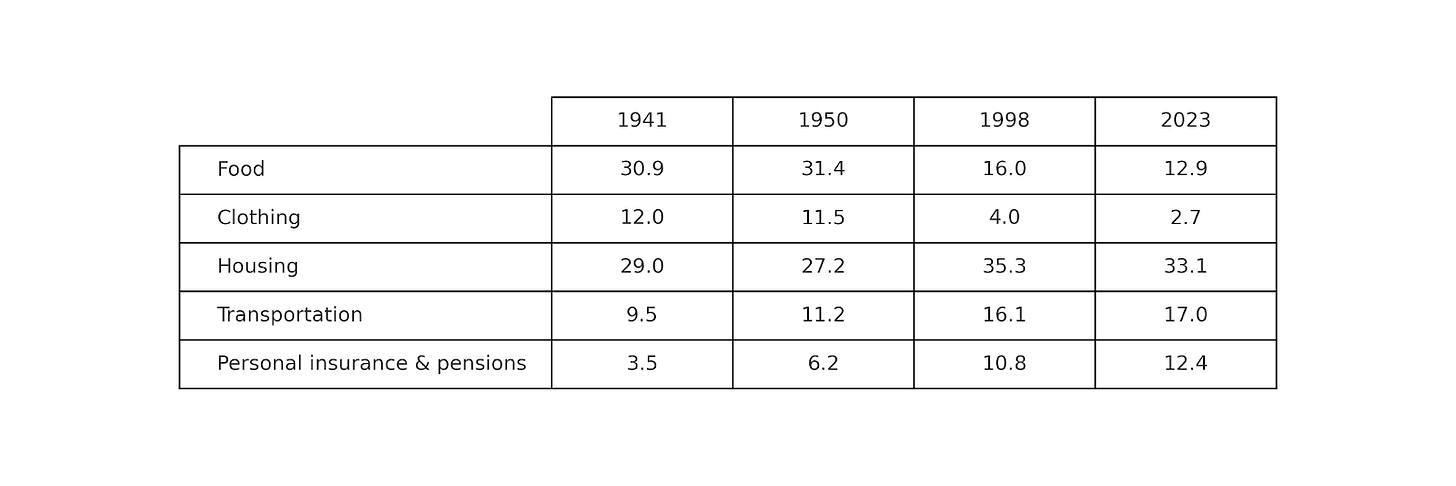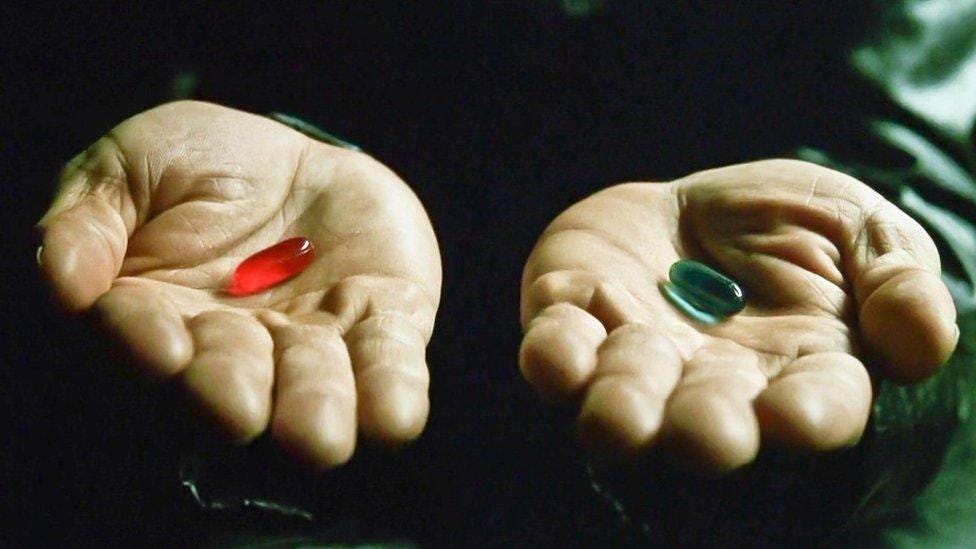— Seth Godin
In economics, scarcity rules all.
There’s extreme artificial scarcity in fashion and crypto. But even most goods in the US are artificially scarce. This will only increase with the advent of AGI.
Costs
Many people complain about rising housing costs. The data tells a different story.
Food and clothing costs as a percent of income have drastically decreased. Housing costs as a percent of income have increased slightly. But the bang for our buck is so much higher.
Housing
The average American is already wealthy. Even though housing costs are “up,” they’re actually down if we compare houses of the past to houses today.
In 1950, the average single-family home was 983 sqft; today it’s 2,400 sqft. This is back when families were larger! We now have pools, insulation, AC (sorry Europe), sprinkler systems, and large windows… they had none of this in 1950. More people own houses now because they can afford to, and housing is better.
This is true of most expenditures– our clothing and transportation are better now than they were before. Everything has been getting incrementally better. Our minivans outperform supercars of the past. A 2021 Honda Odyssey (0–60 mph in 6.5 s) bested a 1976 Lamborghini Countach (0–60 mph in 6.8 s) in a drag-strip test.
Food
We get enough food. Our problem is no longer a lack of calories; it’s obesity. The healthier and trendier food is sometimes more expensive.
However, there are more nutrients in fresh food that’s not organic than in organic food that has sat on the shelf for a few days. There are more antioxidants in organic food, but we aren’t sure how healthy that is. Fresh non-organic food is healthy, cheap, and plentiful.
Furniture
Similarly, there’s reasonably priced and comfortable furniture. Most mattresses are cheaper to buy brand new than to transport. Order Ikea and have someone assemble it. There are dozens of other options of similar quality. The fashionable and higher-end will always cost more.
Scarcity Post-AGI
Let’s assume the advent of AGI, what will be scarce?
AI is already amazing at emotions, but people still crave what we perceive as real. Human connection. Nature.
As AI transforms society, genuine human interactions will become increasingly valued and scarce. AI-driven automation will render most goods and services abundant, trivializing tasks considered valuable due to their scarcity or complexity. Everything a 150 IQ human can do– knowledge, data-driven insights, artistic outputs, and routine problem-solving will become universally accessible. Yet, authentic human experiences—trust, intimacy, vulnerability—remain uniquely finite.
Luxury goods increase in value because they're limited. Similarly, genuine human connection and natural experiences will gain value as technology creates abundant synthetic alternatives. We already see this in how AI art hasn’t negatively impacted the art market.
Authenticity is something AI can simulate but never fully replicate. Our craving for human connection is biological and deeply psychological. Even the most sophisticated AI-generated relationships will leave us yearning for genuine interactions. It doesn’t matter if AI can simulate everything about a relationship, good and bad. We’ll know it’s not real.
There’s an inherent human craving for what is real. We know the blue pill is fake. Take the red pill. When asked if one would live the perfect, optimal fake life or live real life; most choose real life.
Future scarcity won't be defined by material goods or information. Meaningful, authentic human interactions and experiences will always remain scarce. Businesses and individuals will flourish by prioritizing and nurturing these scarce, uniquely human elements.





